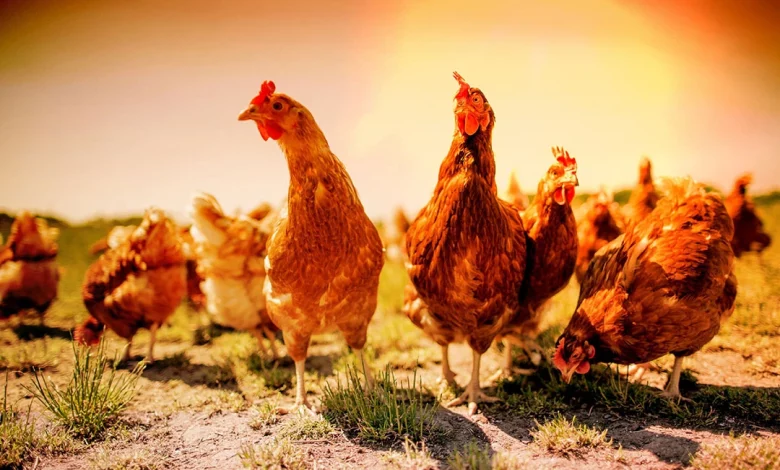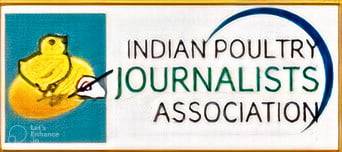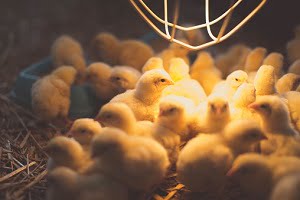PREVENT HEAT STRESS IN POULTRY

INTERVENTIONS TO PREVENT HEAT STRESS IN POULTRY
Dr. Rambabu.D, MVSc, Ph.D, MBA.
Associate Professor
Dept. of Poultry Science, College of Veterinary Science, Korutla
PV Narsimha Rao Telangana Veterinary University
Jagtial dist – 505 326. Telangana State.
Heat stress, commonly referred to as summer stress, affects poultry over the summer as a result of the rising temperatures. This is a situation when the body’s heat production and heat loss are out of balance. In addition to causing poor performance in birds, this ailment also causes significant economic losses due to poor growth, decreased productivity, and increased mortality. When combined with a high humidity environment, this condition becomes more difficult and the birds become even more vulnerable. According to studies, poultry thrives in environments with temperatures between 22 and 28 °C (known as their thermoneutral zone). Past this stage, chickens begin to exhibit signs of heat stress, including decreased feed intake, poor development, poor production, and increased mortality.
Birds are generally more sensitive to high external temperatures since they lack sweat glands, have entire bodies covered in feathers, have higher body temperatures, and are fatty in nature. In addition to lowering performance in poultry, summer or heat stress also causes immunosuppression problems, which can spark disease outbreaks and result in high mortality. This is mostly caused by the fact that poultry lack sweat glands, making it impossible for them to release heat. In this, it is discovered that males are more susceptible to heat exhaustion than females.
Acid-base disequilibrium, or the inability to cool the body to maintain normal body temperature, is the ultimate result of heat stress. Birds can release heat through panting, a form of evaporative cooling, but when temperatures and humidity are high, panting is ineffective at regulating body temperature, leading to heat stress.
When birds are under heat stress, behavioural, neuroendocrine, and physiological alterations are seen. Changes in behaviour can include panting, reduced movement, increased water consumption, decreased feed intake, and raised wings. Oxidative stress, an acid-base imbalance, and pulmonary alkalosis are examples of physiological alterations. The bird may face problems with fertilisation, higher metabolic disorders, lower protein digestion and absorption, and increased odds of illness prevalence on the inside. Reduced feed intake, a poor feed conversion ratio, decreased body weight, poor meat and egg quality, and, as already noted, higher mortality rates are all potential production issues.
Managing poultry in the summer: The following measures can aid birds in avoiding heat exhaustion.
- Management of water
- Management of housing
- Management of feeding
- General management
Water management
In order to manage heat stress, water management is essential. Water usage increases by 3–4 times its feed intake during the summer. A reliable source of water is therefore crucial. Bad bacteria can quickly proliferate in unfavourable conditions, which can result in disease conditions, so a water hygiene technique must be performed. Water pipelines need to be thoroughly cleaned and frequently flushed with organic acids or hydrogen peroxide. Use a good water sanitizer and acidifier to treat the water. Generally speaking, strive to increase the water’s pH when it is acidic (5.5-6). Nutritional water acidifiers should be used to help prevent heat stress because feed intake decreases during hot weather.
Housing management
The two aspects of housing management are interior shed management and outdoor shed management.
- Green grass or agricultural waste thatched on the roof can assist lower shed temperatures. For this, one can use paddy straw.
- Using lime to whitewash the roof reduces the temperature inside the shed.
- Spraying water above the shed with sprinklers.
- Gunny bags are placed over drip water on the side walls (grill) of the shed.
- Permitting trees to enlarge close to the shed so they can cast shade on it.
- Forbid wild birds from accessing the shed because they may carry diseases like avian influenza.
- Install a roof overhang of 4-6 feet to shield birds from the sun.
- Install ridge ventilation to assist in removing warm air from the shed.
Within the shed
- Using fans
- Using a fogger
- Make sure there is an ongoing supply of chilled water (if not possible, periodically flush the water to provide cooler water for birds)
- Decrease the amount of litter (ideally around 400-450 grammes per square foot)
Feeding Management
According to research, for every 1° increase in temperature, feed intake decreases by 1.25 percent. Also, it has been found that the feed intake decreases by about 5% for every degree above 32° C in temperature. Given this, it is recommended to feed a high-quality diet during periods of potential heat stress.
- Feeding should take place in the cooler morning or evening hours, however a large gap between feedings is not advised.
- Increase the quantity of feeders and drinks throughout the feeding period to lessen bird rivalry.
- Studies have shown that including antioxidants can aid with body weight gain, feed consumption, and stress reduction. (Vitamin E, Selenium, Vitamin C).
- During the summer, a high-energy meal should be offered because birds waste more energy when panting.
- Oil should be used to supplement energy in feed rather of grain because it has a lower heat increment value than protein and carbohydrates.
- Summertime feed consumption declines. Instead of directly raising the protein amount, it is advised to supplement the diet with 10-15% extra amino acids, vitamins, and minerals to make up for nutritional and productivity losses.
- Increase calcium and phosphorus intake to combat thin eggshells, which are more prevalent in the summertime due to respiratory alkalosis (more carbon dioxide is lost due to panting).
- Due to the prevalence of immunosuppression during this time, viral challenges are more frequent. It has been demonstrated that fumaric acid has strong antiviral activity and can aid in lowering viral challenges. Reduce stress and enhance flock performance by using coated fumaric acid and benzoic acid as an acidifier (as an AVIMATRIX feed additive).
- It has been demonstrated that the organic trace minerals MINTREX chelated trace minerals and HMTBa, a methionine source, can alleviate the effects of heat stress. Diffusion allows HMTBa molecules to be absorbed without the use of energy. Hence, combining minerals with HMTBa can lessen summertime heat stress and enhance performance.
- There are many different ways that essential oils can act, from immunomodulators to performance boosters. Thymol and carvacrol in particular can help reduce the effects of summer stress while also enhancing overall performance and meat yield.
- The ability to counteract or compensate for physiological changes brought on by heat stress, as well as the ability to restore immunological function and encourage strong inflammatory responses, make the use of MOS and B Glucans during heat stress circumstances persuasive.
- By enhancing the water quality and feed intake, the addition of ammonium chloride, potassium chloride, and/or sodium bicarbonate has shown increased performance in broilers.
- Corticosterone levels and the excessive release of pro-inflammatory chemicals can both be managed with the aid of probiotics. By increasing the number of goblet cells in the duodenum and jejunum of heat-stressed broilers, lactobacillus-based probiotics improve feed conversion ratio.
- Consistent antifungal usage is advised since a hot, humid atmosphere encourages the formation of mould and fungi in feed.
General Management
- On the floor, there should be 2-3 inches of litter.
- In the summer, 10% more floor space should be available. In order to prevent heat stress, bird overcrowding must be stopped.
- Transportation, debeaking, vaccination, and shifting should all be done at night or in the early morning when it’s cooler.
- To provide comfort, birds that are really heat-stressed can be submerged in cold water for two to three minutes. Make sure to keep their neck and head out of the water.
- Utilize foggers in the shed to lower the temperature by up to 5 to 10 degrees Celsius, depending on the fogger’s quality.
To allow for unrestricted air flow, the house should be placed far from neighbouring structures. “Summer management is essential to boosting performance and making money in challenging circumstances. Hence, good bird health is brought about through appropriate use of feeding, water and shed management, which also benefits the farmer.


